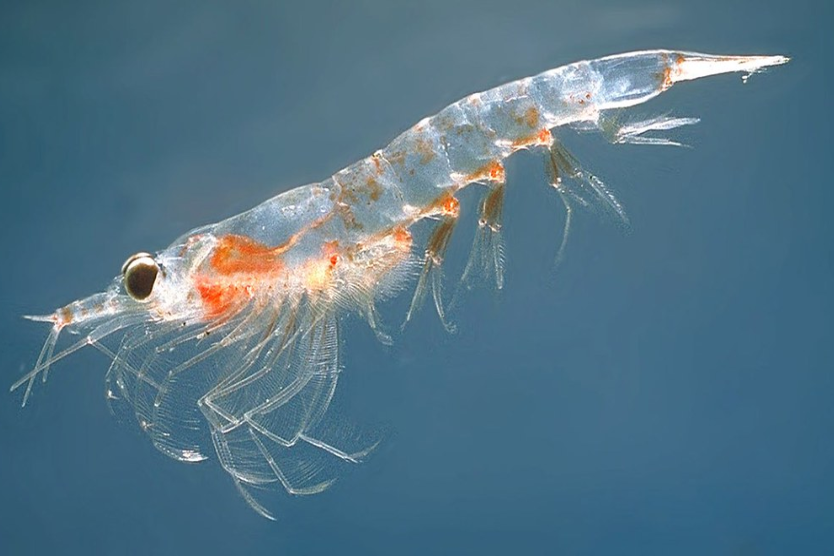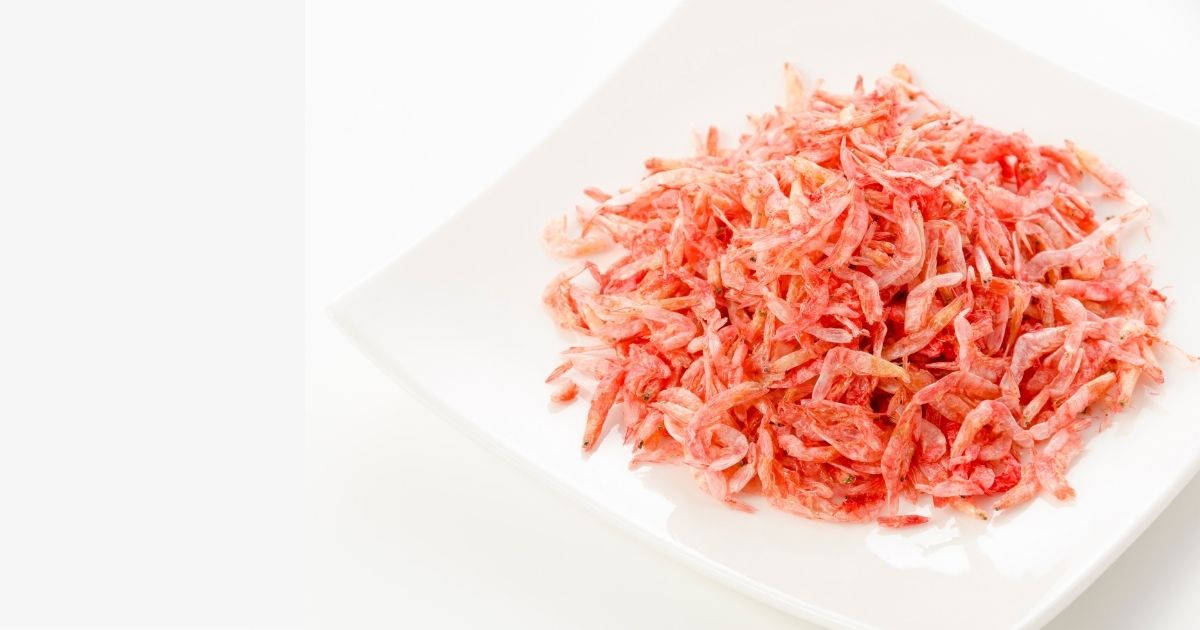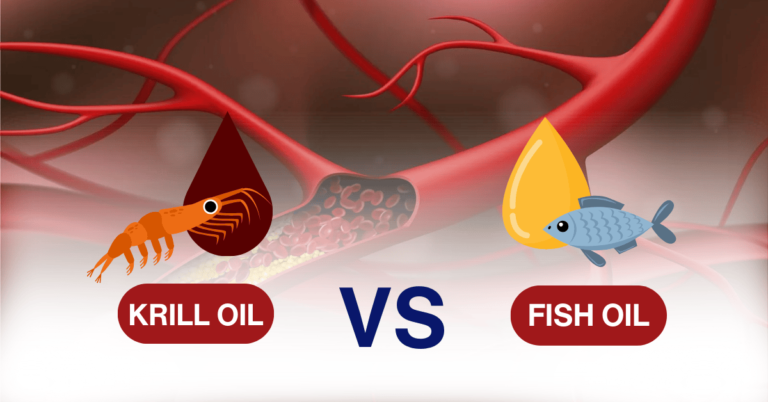Euphausia superba, a species of krill, thrives in large schools known as swarms, captivating marine life enthusiasts and health-conscious individuals alike. The term “krill” originates from the Norwegian language, and these small crustaceans have been a vital food source for centuries. Recently, krill meat has gained significant popularity in the U.S., earning its reputation as the “superfood of the sea.”
Why should you care about krill? Its increasing availability aligns with a growing recognition of the importance of nutrition in addressing modern health issues, including heart disease, inflammation, and cognitive decline.
Packed with high-quality protein, omega-3 fatty acids, and astaxanthin—a powerful antioxidant—krill meat is more than just a trendy addition to your diet; it’s a formidable ally for your overall health.
Let’s dive deeper into the health benefits of krill and discover how it can enhance your well-being.
Are Krill Safe to Eat?
What is krill?
Krill meat is the edible portion of small, shrimp-like crustaceans found primarily in cold ocean waters. Is it good to eat krill?
Yes. krill is highly valued for its rich content of omega-3 fatty acids, high-quality protein, and the antioxidant astaxanthin.
Are krill safe to eat?
Yes, krill are safe to eat, making them an excellent choice for those seeking a nutritious seafood option. One of the most notable advantages of consuming krill is that they inhabit the lower levels of the food chain, primarily feeding on algae. This unique dietary source means that krill do not accumulate harmful pollutants, such as heavy metals and mercury, which are often found in larger fish like tuna and swordfish. As a result, krill is a much safer seafood alternative, especially for individuals concerned about toxic exposure through their diet.
However, it is important to consider potential allergens. Krill are classified as crustaceans, so individuals with shellfish allergies should approach them with caution as they may experience reactions. So it’s advisable to consult a healthcare provider before introducing krill meat into the diet.
By choosing krill as a food source, consumers can enjoy a nutrient-rich option that supports overall health while minimizing exposure to harmful substances. This combination of safety, sustainability, and health benefits makes krill meat an appealing addition to a balanced diet.
Why is Krill Meat a Superfood?
Omega-3 Fatty Acids in Krill
Krill meat is a rich source of omega-3 fatty acids, specifically EPA (eicosapentaenoic acid) and DHA (docosahexaenoic acid). These nutrients are vital for heart health and brain function, akin to how oil lubricates a well-functioning engine. Unlike other omega-3 sources, like fish oil, where omega-3s are bound to triglycerides, krill’s omega-3s are bound to phospholipids. This unique binding allows for superior absorption by the body, facilitating better delivery to the brain and cell membranes. Imagine krill as a service that ensures essential nutrients reach their destination more effectively. These omega-3s are instrumental in reducing inflammation, improving cholesterol levels, and supporting cognitive function, making them an essential ally in maintaining overall health.
Protein Content in Krill
Krill meat offers complete protein, containing all the essential amino acids your body needs. Think of it as a finely tuned symphony, where each amino acid plays a critical role in supporting muscle repair, tissue maintenance, and immune health. As a high-protein, low-fat food, krill is particularly beneficial for those looking to build muscle or manage their weight. It provides the necessary building blocks for overall body maintenance without excess calories, making it an excellent choice for health-conscious individuals.
Astaxanthin: A Potent Antioxidant
Is krill good for your skin?
Yes, krill has Astaxanthin; a powerful antioxidant found in krill meat, acting like a shield for your body against oxidative stress. This compound supports heart health, eye health, and skin protection while reducing inflammation and combating cellular damage linked to aging and chronic diseases. Unique in its ability to cross the blood-brain barrier, astaxanthin offers added protection to the brain and nervous system, serving as a guardian for your most vital organ.
Supports Detoxification and Metabolism
Krill meat aids in detoxification, helping the body eliminate toxins much like a well-functioning filtration system. It also plays a key role in regulating metabolism, thanks to its iodine content, which is crucial for healthy thyroid function. This nutrient-dense profile ensures that essential vitamins and minerals are delivered without excess calories, supporting effective weight management and overall health.
Rich in Essential Vitamins and Minerals
Packed with vitamins A, E, and B-complex vitamins, along with essential minerals like potassium and iodine, krill meat serves as a multivitamin in a single serving. These nutrients support immune function, brain health, and energy production. For instance, iodine is critical for thyroid health, while potassium helps regulate muscle function and blood pressure, contributing significantly to overall wellness.
Low in Calories and Fat
Krill meat stands out as a low-calorie, low-fat option that still delivers high nutritional value. Its fats primarily consist of heart-healthy omega-3 fatty acids, making it an ideal choice for those managing their weight or seeking nutrient-rich foods without added fat. It’s like finding a gourmet meal that nourishes you without the extra baggage.
How to Cook and Enjoy Krill Meat
Krill meat, known for its mild, slightly sweet flavor, is a versatile ingredient that enhances a wide range of dishes. What sets krill apart from other seafood is its incredibly tender texture and fast cooking time, making it both convenient and healthy. Below are some specific ways to incorporate this nutrient-rich protein into your meals, complete with cooking times and recipe suggestions.
Krill Meat in Main Courses
What kind of food is krill?
Krill’s delicate texture makes it an ideal protein substitute in dishes like pasta, stir-fries, or grain bowls. Unlike shrimp or other seafood, krill cooks much faster—usually in just 2 to 3 minutes—so it’s perfect for quick meals without sacrificing flavor or nutrition.
- Seafood Pasta: Substitute krill for shrimp in your favorite seafood pasta. Cook pasta according to package instructions. In a separate pan, sauté minced garlic (1-2 cloves) in olive oil (2 tablespoons) over medium heat for about 1 minute. Add krill (about 1 cup) and cook until just pink, about 2-3 minutes. Toss with the cooked pasta, fresh herbs (like parsley or basil), and a splash of lemon juice for a vibrant dish.
- Stir-Fried Vegetables with Krill: Heat 1 tablespoon of oil in a wok or large skillet over medium-high heat. Add chopped bell peppers, zucchini, and onions, and stir-fry for about 3-4 minutes. Add 1 cup of krill and cook for an additional 2-3 minutes until heated through. Season with soy sauce or tamari and serve over rice or quinoa for a nutritious weeknight meal.
- Grain Bowls: For a hearty grain bowl, cook quinoa (1 cup) according to package instructions. In a skillet, sauté krill (1 cup) with a splash of olive oil, garlic, and your choice of vegetables (such as spinach and cherry tomatoes) for 3-4 minutes. Serve over quinoa and drizzle with your favorite dressing or tahini sauce for a balanced and satisfying dish.
Krill for Light Meals and Snacks
Thanks to its light yet nutrient-dense profile, krill meat works exceptionally well in lighter dishes like salads and appetizers. Its quick preparation allows you to whip up a fresh, high-protein meal in no time.
- Krill Salad: Toss krill (1 cup) into a fresh green salad with mixed greens, diced avocado, cucumber, and cherry tomatoes. Dress with olive oil and lemon juice for a flavorful, low-fat option. This salad provides a refreshing, nutrient-rich meal that can be prepared in under 10 minutes.
- Bruschetta with Krill: For appetizers, toast slices of whole-grain bread. Top with krill (1 cup), a drizzle of olive oil, lemon juice, and fresh herbs like basil or parsley. This dish not only looks appealing but also offers a delightful burst of flavor.
Soups and Stews
Krill meat brings a distinctive depth of flavor and a nutrient boost to soups and stews. Its fast cooking time is especially beneficial; add krill only towards the end of cooking to avoid overcooking the delicate meat.
- Seafood Broth: Start by simmering a seafood-based broth with vegetables such as carrots, celery, and onions for 20-30 minutes. Add krill (1 cup) during the last 3 minutes of cooking, along with herbs like parsley and dill, to enhance the dish without overpowering it.
- Tomato Stew with Krill: Prepare a tomato-based stew by simmering canned tomatoes, garlic, onions, and bell peppers for 15-20 minutes. Add krill (1 cup) in the last 3 minutes of cooking for added flavor and nutrition.
Health-Boosting Smoothies
While unconventional, krill meat can even be blended into smoothies for an unexpected protein boost.
- Krill Smoothie: Combine 1 cup of cooked krill with 1 cup of mixed berries, a handful of spinach, and a cup of coconut water or almond milk. Blend until smooth. The mild flavor of krill blends seamlessly with the fruits and vegetables, providing a hidden yet powerful nutritional punch without altering the overall taste of the smoothie.
Why Krill is a Sustainable Choice
Krill harvesting is considered one of the most sustainable practices in the seafood industry. The krill population is abundant, and harvesting methods are designed to minimize ecological disruption, making krill a responsible food source for environmentally conscious consumers.
Incorporating krill meat into a balanced diet
Incorporating krill meat into a balanced diet can be both nutritious and delicious. Krill meat, derived from tiny crustaceans found in the ocean, is rich in essential nutrients such as omega-3 fatty acids, protein, vitamins, and minerals. Here are some effective ways to include krill meat in your meals for a well-rounded diet:
1. As a Protein Source
- Substitute for Other Proteins: Use krill meat as a protein alternative in recipes that typically call for fish, shrimp, or chicken. For example, you can make krill meat stir-fries, tacos, or salads.
- High-Protein Snacks: Incorporate krill meat into snacks by mixing it with avocado or cream cheese and spreading it on whole-grain crackers.
2. In Salads and Bowls
- Add to Salads: Toss krill meat into salads for an added protein boost. Pair it with leafy greens, colorful vegetables, and a light vinaigrette dressing.
- Bowl Meals: Create nutrient-dense bowl meals by adding krill meat to a base of quinoa or brown rice, topped with vegetables, and a dressing or sauce of your choice.
3. In Soups and Stews
- Hearty Soups: Enhance your soups and stews with krill meat. It works well in seafood chowder or as a protein-rich addition to vegetable soups.
- Krill Meat Broth: Make a broth using krill meat, which can serve as a base for various soups or be sipped as a warm, comforting drink.
4. In Pasta Dishes
- Pasta with Krill Meat: Incorporate krill meat into pasta dishes, such as creamy Alfredo or marinara sauces. This adds a seafood flavor and nutritional value to your meals.
- Krill Meat Pesto: Blend krill meat into a homemade pesto sauce for a unique twist that pairs well with whole-grain pasta.
5. Krill Meat Snacks
- Canned Krill Meat: Look for canned or preserved krill meat as a convenient snack option. Enjoy it straight from the can or use it as a filling in sandwiches or wraps.
- Dip or Spread: For a healthy option, make a dip by mixing krill meat with yogurt, herbs, and spices. Serve with raw veggies or whole-grain chips.
6. In Breakfast Dishes
- Breakfast Omelets: Add krill meat to your morning omelet along with vegetables and cheese for a hearty breakfast.
- Smoothies: For a nutrient-packed smoothie, blend krill oil or krill meat with fruits, leafy greens, and yogurt or almond milk as a base.
7. Consider Serving Sizes
To ensure a balanced diet, consider the recommended serving sizes of krill meat, which can vary based on dietary needs and goals. Generally, incorporating 1-2 servings a week can contribute positively to your overall nutrient intake.
By integrating krill meat into various meals, you can enjoy its health benefits while maintaining a balanced diet. Experiment with different recipes and cooking methods to find your favorite ways to enjoy this nutritious seafood option. Always consult a healthcare professional or nutritionist for personalized dietary advice tailored to your health needs.
Conclusion
In summary, krill meat is not just a passing trend in the seafood market; it’s a nutrient-dense, sustainable choice that offers many health benefits. Rich in omega-3 fatty acids, high-quality protein, and antioxidants, krill supports heart and brain health while fitting seamlessly into various diets. As this superfood is popular and more accessible in grocery stores and markets, now is the perfect time to try krill meat. Consider adding it to your following grocery list or meal plan and exploring the delicious ways you can enjoy its remarkable nutritional benefits.
By making krill a part of your diet, you’ll diversify your meals and contribute to a healthier, more sustainable food system.
FAQ
Is krill high in cholesterol?
Krill is low in cholesterol compared to other seafood. A typical serving contains about 70 mg of cholesterol, making it a healthier choice for those concerned about cholesterol intake.
Is krill meat good for you?
Yes, krill meat is nutritious, rich in omega-3 fatty acids, protein, and antioxidants. It supports heart health, reduces inflammation, and contributes to overall well-being, making it a healthy addition to your diet.
Is krill good for your liver?
Krill oil may benefit liver health by reducing liver fat and improving lipid metabolism. Its omega-3 content can help lower inflammation, promoting a healthier liver function overall.
Is krill good for the brain?
Yes, krill is beneficial for brain health due to its high omega-3 fatty acid content. These essential fats support cognitive function, memory, and may help reduce the risk of neurodegenerative diseases.
Will krill raise blood pressure?
Krill is unlikely to raise blood pressure; in fact, its omega-3 fatty acids can help lower blood pressure levels and improve heart health, making it a heart-friendly food choice.
Is krill oil good for kidneys?
Krill oil can be beneficial for kidney health. Its anti-inflammatory properties may support kidney function and reduce the risk of chronic kidney diseases when consumed as part of a balanced diet.
Is krill good for diabetes?
Krill may aid in managing diabetes by improving insulin sensitivity and reducing inflammation. Its omega-3 fatty acids can support heart health, which is crucial for individuals with diabetes.











